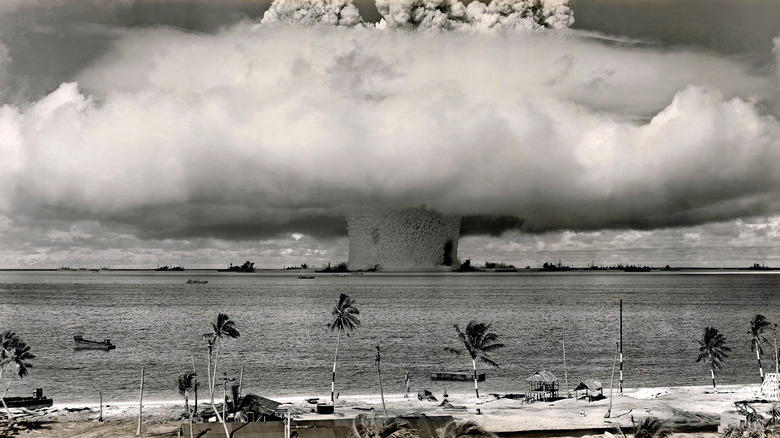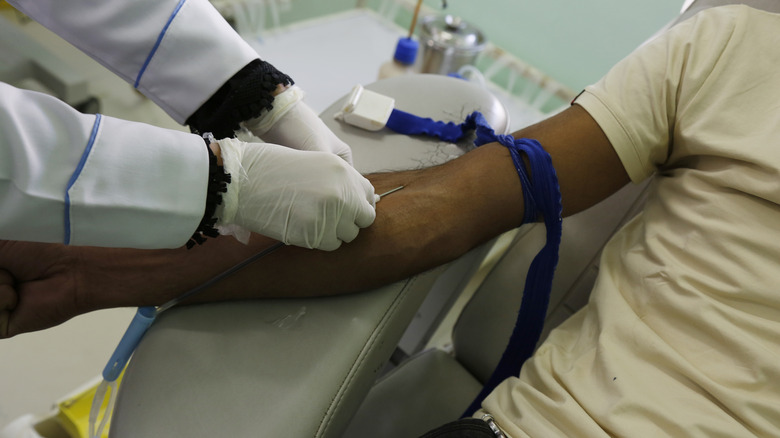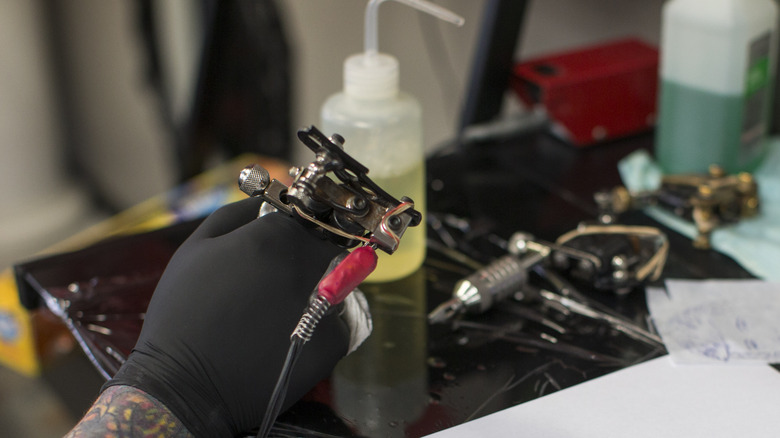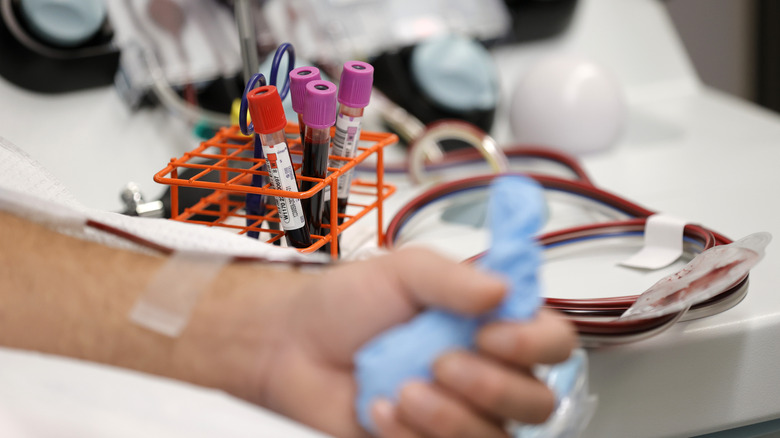The Strange Reason Why Two US States Tattooed Thousands Of Babies And Children
Humans have been tattooing each other for thousands of years, if not longer, according to Smithsonian Magazine. Mummified remains of tattooed individuals who lived and died 5,000 years ago have been unearthed, informing researchers that the practice predates the written historical record.
Of course, by and large, tattooing has been reserved for adults. The process is prolonged and painful and not really suited for children, who can't consent anyway. And indeed, states are keen to keep children out of tattoo parlors. As the National Conference of State Legislatures reports, most of the 50 states don't allow anyone under 18 to get tattooed (or branded or body-pierced), with or without parental consent.
However, 70 years ago, amid fears of nuclear war and an existing blood shortage, a few physicians in the U.S. had the idea to tattoo babies and children with their blood types (for reasons that perhaps made sense at the time). A couple of states even went through with it, and in at least one case, a newborn boy was tatted up before he'd even lived for two hours.
The ugly realities of nuclear war
In the years following the dropping of atomic bombs on Hiroshima and Nagasaki, the U.S. and the Soviets began building bigger and badder bombs and stockpiling them. And while the '50s are generally remembered as a prosperous and happy time (for certain Americans, anyway), the dark shadow of nuclear war was never far from the surface. At the time, planned responses were seemingly based on wishful thinking: Look no further than the downright comical movies that were shown to schoolchildren in those days, telling them to take cover under their desks in the event of a nuclear attack (as if that would help).
Meanwhile, health officials in the U.S. became concerned about the fact that a war with the Soviets would result in a dire need for donor blood, especially considering that large portions of the existing stockpile — and the individuals who donated — could be contaminated by nuclear radiation (via IFL Science). Further still, the Korean War was raging at the time, and most of the U.S. donor supply was being sent to Asia for the war effort. A solution to this hypothetical problem was needed, and quickly.
'Walking blood banks'
The idea of "blood banking" goes back thousands of years, although obviously, the process has become less crude over the years (via Community Blood Center). These days, the process relies on volunteer donors, and it's only open to adults and older teenagers (you have to be 17 in most states, 16 in some, with parents' permission, according to the American Red Cross).
However, desperate times call for desperate measures, as the old saying goes, and in the event of a full-scale war, with injured and sickened soldiers and civilians needing blood by the tens of thousands, officials hit upon the idea of getting blood from anyone with a pulse (should it come to that). Or a "walking blood bank," as the Journal of the American Academy of Dermatology describes it. But you may see why there could be a problem with this plan, especially when it comes to children. Cards identifying which blood type a person has (so they can give or receive donor blood) can be lost, and a person can easily forget their blood type (do you remember yours?). So a more "permanent" means of identifying donors'/recipients' blood types was needed.
Permanent identification
Chicago doctor Andrew C. Ivy had served as an American Medical Association consultant at the Nuremberg war crimes tribunal, according to IFL Science. He remembered, from those days, that some of the Nazi soldiers who appeared during those proceedings had their own blood types tattooed on their chests and thought that might work here. He set about trying to convince the Chicago Medical Civil Defense Committee that this should be tried on civilians, adults, and children.
In a reality that's rather gruesome to think about, the decision was reached that tattooing the "donor" on the chest was the way to go, as limbs could easily be blown off in war (via Amusing Planet). Fortunately for the children of Chicago, seemingly no one else in the Windy City thought this was a good idea. However, a neighboring state, Indiana, decided to roll with it, as did Utah. What's more, the Beehive State was a special case, as there is a large population of people from the Church of Jesus Christ of Latter-Day Saints, which prohibits tattoos. However, LDS leader and theologian Bruce R. McConkie assured his flock (per IFL Science) that tattoos are allowed when "placing of a blood type or an identification number in an obscure place.”
Tattooing America's children
In January 1952, schoolchildren in Hobart, Indiana were sent home with permission slips to get tattooed with their blood types (via Amusing Planet). The website describes the scene in rather gruesome detail: young children sitting in the classrooms, while a few feet away, behind a curtain, their classmates are screaming in pain as they go under the needle. One 11-year-old girl recounted a classmate emerging from behind the curtain and promptly fainting (per The Washington Post). And in a case out of Utah, the possibly-youngest person to have been tattooed during this program was a newborn infant, sporting ink within a couple of hours of his birth (per Beaver County News, via Mental Floss)
It's unclear just how many infants and children got tatted with their blood types in those days. Mental Floss notes that by 1955, 60,000 adults and children had gotten tattooed with their blood type in Lake County, Indiana alone, although it bears noting that this figure includes both adults and children.
Why aren't we all sporting tattoos of our blood types?
The plan to tattoo Americans — both adults and children — with their blood types was born out of a gruesome necessity, however hypothetical it was. But once the Korean War came to an end, the need for donor blood wasn't as acute, and the pressure was off (via Mental Floss). Further still, most competent and ethical doctors are loath to give someone a blood transfusion without knowing for certain what the patient's blood type is, and relying on a card or a tattoo just won't do. As such, they prefer to type and cross the patient's blood at the time and place where it's needed. And, of course, the possibility of a nuclear war with the Soviets is no longer a thing.
Remnants of the program still exist in the living people who were tattooed with their blood types. Considering that the youngest such people were children in the 1950s, it stands to reason that many of them are still alive since they'd only be in their late 60s and early 70s. So if you're on a first-name basis with a baby boomer in Utah or Indiana and don't mind asking awkward questions, you may see a faded tattoo of the bearer's blood type, inked into them when they were a child.





